当前位置:网站首页>Image classification, just look at me!
Image classification, just look at me!
2022-07-05 18:02:00 【Everything】

List of articles
- Preface
- Support model ( Click to jump to the training your dataset tutorial page )
- Environment building
- Data set preparation
- Profile explanation
- How to train
- Model to evaluate
- Add new model components
- Category activation diagram visualization
- Visualization of learning rate strategies
- Pre training weights
Preface
Project address :https://github.com/Fafa-DL/Awesome-Backbones
cannot access GitHub: official account 【 A graduate student who knows everything 】- Course resources - My project -00
Video tutorial :https://www.bilibili.com/video/BV1SY411P7Nd
This article is used to take care of inaccessible Github Classmate ~
The original :
- Help everyone from simple LeNet Network to Transformer Repeat learning on the Internet ;
- Help improve the ability to read engineering code ;
- Help with network comparison / Alchemy / Hair paper
Support model ( Click to jump to the training your dataset tutorial page )
- LeNet5
- AlexNet
- VGG
- DenseNet
- ResNet
- ResNeXt
- SEResNet
- SEResNeXt
- RegNet
- MobileNetV2
- MobileNetV3
- ShuffleNetV1
- ShuffleNetV2
- EfficientNet
- RepVGG
- Res2Net
- ConvNeXt
- HRNet
- ConvMixer
- CSPNet
- Swin-Transformer
- Vision-Transformer
- Transformer-in-Transformer
- MLP-Mixer
- DeiT
- Conformer
- T2T-ViT
- Twins
- PoolFormer
- VAN
Environment building
- It is recommended to use Anaconda Environmental Management , The commands to create the environment are as follows
conda create -n [name] python=3.6 among [name] Change to your own environment name , Such as [name]->torch,conda create -n torch python=3.6
- My test environment is as follows
torch==1.7.1
torchvision==0.8.2
scipy==1.4.1
numpy==1.19.2
matplotlib==3.2.1
opencv_python==3.4.1.15
tqdm==4.62.3
Pillow==8.4.0
h5py==3.1.0
terminaltables==3.1.0
packaging==21.3
- First installation Pytorch. The suggested version is the same as mine , Get into Pytorch Official website , Click on
install previous versions of PyTorch, With 1.7.1 For example , The installation given on the official website is as follows , Choose the right one cuda edition
# CUDA 11.0
pip install torch==1.7.1+cu110 torchvision==0.8.2+cu110 torchaudio==0.7.2 -f https://download.pytorch.org/whl/torch_stable.html
# CUDA 10.2
pip install torch==1.7.1 torchvision==0.8.2 torchaudio==0.7.2
# CUDA 10.1
pip install torch==1.7.1+cu101 torchvision==0.8.2+cu101 torchaudio==0.7.2 -f https://download.pytorch.org/whl/torch_stable.html
# CUDA 9.2
pip install torch==1.7.1+cu92 torchvision==0.8.2+cu92 torchaudio==0.7.2 -f https://download.pytorch.org/whl/torch_stable.html
# CPU only
pip install torch==1.7.1+cpu torchvision==0.8.2+cpu torchaudio==0.7.2 -f https://download.pytorch.org/whl/torch_stable.html
- installed Pytorch after , Run again
pip install -r requirements.txt
Data set preparation
1. Label file making
- This demonstration takes flower data set as an example , The directory structure is as follows :
├─flower_photos
│ ├─daisy
│ │ 100080576_f52e8ee070_n.jpg
│ │ 10140303196_b88d3d6cec.jpg
│ │ ...
│ ├─dandelion
│ │ 10043234166_e6dd915111_n.jpg
│ │ 10200780773_c6051a7d71_n.jpg
│ │ ...
│ ├─roses
│ │ 10090824183_d02c613f10_m.jpg
│ │ 102501987_3cdb8e5394_n.jpg
│ │ ...
│ ├─sunflowers
│ │ 1008566138_6927679c8a.jpg
│ │ 1022552002_2b93faf9e7_n.jpg
│ │ ...
│ └─tulips
│ │ 100930342_92e8746431_n.jpg
│ │ 10094729603_eeca3f2cb6.jpg
│ │ ...
- stay
Awesome-Backbones/datas/Create a label file inannotations.txt, By rowClass alias Indexeswrite file ;
daisy 0
dandelion 1
roses 2
sunflowers 3
tulips 4
2. Data set partitioning
- open
Awesome-Backbones/tools/split_data.py - modify
Original dataset pathas well asDivided save path, It is strongly recommended that the divided save pathdatasetsDon't change it , The next step is to operate based on the folder by default
init_dataset = 'A:/flower_photos'
new_dataset = 'A:/Awesome-Backbones/datasets'
- stay
Awesome-Backbones/Open the terminal and enter the command :
python tools/split_data.py
- The format of the divided data set is as follows :
├─...
├─datasets
│ ├─test
│ │ ├─daisy
│ │ ├─dandelion
│ │ ├─roses
│ │ ├─sunflowers
│ │ └─tulips
│ └─train
│ ├─daisy
│ ├─dandelion
│ ├─roses
│ ├─sunflowers
│ └─tulips
├─...
3. Data set information file making
- Ensure that the divided data set is in
Awesome-Backbones/datasetsNext , If not, thenget_annotation.pyNext, modify the data set path ;
datasets_path = ' Your dataset path '
- stay
Awesome-Backbones/Open the terminal and enter the command :
python tools/get_annotation.py
- stay
Awesome-Backbones/datasGet the generated dataset information filetrain.txtAndtest.txt
Profile explanation
- Each model has its own configuration file , Save in
Awesome-Backbones/modelsNext - Model
''' from backbone、neck、head、head.loss Form a complete model ; type Corresponding to the corresponding structure , Then the parameters needed to build the structure , Each profile has been set ; In the configuration file `type` It is not a parameter at the time of construction , It's the class name . What needs to be modified :num_classes Change to corresponding quantity , For example, flower data sets fall into five categories , be `num_classes=5` Note that if ` The number of categories is less than 5` At this time, it defaults to top5 Accuracy rate is 100% '''
model_cfg = dict(
backbone=dict(
type='ResNet', # Backbone network type
depth=50, # Backbone network depth , ResNet Generally speaking, there are 18, 34, 50, 101, 152 You can choose
num_stages=4, # Backbone network status (stages) Number of , These States produce characteristic graphs as follow head The input of .
out_indices=(3, ), # Output characteristic graph output index . The farther away from the input image , The larger the index
frozen_stages=-1, # Network tuning , Freeze the network stage( The inverse propagation algorithm is not executed during training ), if num_stages=4,backbone contain stem And 4 individual stages.frozen_stages by -1 when , Do not freeze the network ; by 0 when , frozen stem; by 1 when , frozen stem and stage1; by 4 when , Freeze the whole backbone
style='pytorch'), # Backbone style ,'pytorch' It means that the step length is 2 The layer of is 3x3 Convolution , 'caffe' It means that the step length is 2 The layer of is 1x1 Convolution .
neck=dict(type='GlobalAveragePooling'), # Neck network type
head=dict(
type='LinearClsHead', # Linear classification header ,
num_classes=1000, # Number of output categories , This is consistent with the number of categories in the dataset
in_channels=2048, # Enter the number of channels , This is related to neck The output channels of are consistent
loss=dict(type='CrossEntropyLoss', loss_weight=1.0), # Loss function configuration information
topk=(1, 5), # Evaluation indicators ,Top-k Accuracy rate , Here for top1 And top5 Accuracy rate
))
- Datasets
''' This part corresponds to the construction training / During the test Datasets, Use torchvision.transforms Pre treatment ; size=224 After final treatment , Image size of feed network ; Normalize Corresponding to normalization , By default ImageNet Mean and variance of data set , If you have parameters of your own dataset , You can choose to overwrite . '''
train_pipeline = (
dict(type='RandomResizedCrop', size=224),
dict(type='RandomHorizontalFlip', p=0.5),
dict(type='ToTensor'),
dict(type='Normalize', mean=[0.485, 0.456, 0.406], std=[0.229, 0.224, 0.225]),
dict(type='RandomErasing',p=0.2,ratio=(0.02,1/3)),
)
val_pipeline = (
dict(type='Resize', size=256),
dict(type='CenterCrop', size=224),
dict(type='ToTensor'),
dict(type='Normalize', mean=[0.485, 0.456, 0.406], std=[0.229, 0.224, 0.225])
)
- Train/Test
''' This part corresponds to training / Test the required parameters ; batch_size : Adjust according to your own equipment , The suggestion is `2` Multiple num_workers : Dataloader Number of threads loading data in , Adjust according to your own equipment pretrained_flag : If pre training weights are used , Is set to True pretrained_weights : Weight path freeze_flag : If you freeze some training , Is set to True freeze_layers : The options for freezing are backbone, neck, head epoches : Maximum iteration period ckpt : Weight files needed to evaluate the model Note that if ` The number of categories is less than 5` At this time, it defaults to top5 Accuracy rate is 100% ` Other parameters need not be changed ` '''
data_cfg = dict(
batch_size = 32,
num_workers = 4,
train = dict(
pretrained_flag = False,
pretrained_weights = './datas/mobilenet_v3_small.pth',
freeze_flag = False,
freeze_layers = ('backbone',),
epoches = 100,
),
test=dict(
ckpt = 'logs/20220202091725/Val_Epoch019-Loss0.215.pth',
metrics = ['accuracy', 'precision', 'recall', 'f1_score', 'confusion'],
metric_options = dict(
topk = (1,5),
thrs = None,
average_mode='none'
))
)
- Optimizer
''' Optimizer during training , And torch.optim Corresponding type : 'RMSprop' Corresponding torch.optim.RMSprop, Can be found in torch.optim see PyTorch Support Adadelta、Adagrad、Adam、AdamW、SparseAdam、Adamax、ASGD、SGD、Rprop、RMSprop、Optimizer、LBFGS You can choose the optimizer according to your needs lr : Initial learning rate , According to oneself Batch Size adjustment ckpt : Weight files needed to evaluate the model Other parameters need not be changed '''
optimizer_cfg = dict(
type='RMSprop',
lr=0.001,
alpha=0.9,
momentum=0.9,
eps=0.0316,
weight_decay=1e-5)
- Learning Rate
''' Learning rate update strategy , Each method can be found in Awesome-Backbones/core/optimizers/lr_update.py see StepLrUpdater : Linear decline CosineAnnealingLrUpdater : Cosine annealing by_epoch : Whether each Epoch Update learning rate warmup : Use... Before formally using the learning rate update strategy warmup Primary school habituation training , Optional constant, linear, exp warmup_ratio : And `Optimizer` Medium `lr` Combine the selected warmup Method to update the learning rate calculation warmup_by_epoch : The functions and `by_epoch` similar , if False, For each step (Batch) updated , Otherwise, every cycle warmup_iters : warmup Duration of action ,warmup_by_epoch by True Represents the period ,False Represents the number of steps '''
lr_config = dict(
type='CosineAnnealingLrUpdater',
by_epoch=False,
min_lr_ratio=1e-2,
warmup='linear',
warmup_ratio=1e-3,
warmup_iters=20,
warmup_by_epoch=True)
How to train
- confirm
Awesome-Backbones/datas/annotations.txtThe label is ready - confirm
Awesome-Backbones/datas/Nexttrain.txtAndtest.txtAndannotations.txtCorresponding - Select the model you want to train , stay
Awesome-Backbones/models/Find the corresponding configuration file - according to
Profile explanationModify the parameters - stay
Awesome-BackbonesTurn on the terminal to run
python tools/train.py models/mobilenet/mobilenet_v3_small.py
Command line :
python tools/train.py \
${CONFIG_FILE} \
[--resume-from] \
[--seed] \
[--device] \
[--gpu-id] \
[--deterministic] \
Description of all parameters :
config: Path to the model configuration file .--resume-from: Resume training from the break , Provide weight path ,Be sure to note that the correct way to recover is from Last_Epoch***.pth, Such as –resume-from logs/SwinTransformer/2022-02-08-08-27-41/Last_Epoch15.pth--seed: Set random number seed , By default, it is set according to the environment--device: Set up GPU or CPU Training--gpu-id: Appoint GPU equipment , The default is 0( Single cards are basically 0 No need to change )--deterministic: many GPU Training related , Do not set
Model to evaluate
- confirm
Awesome-Backbones/datas/annotations.txtThe label is ready - confirm
Awesome-Backbones/datas/Nexttest.txtAndannotations.txtCorresponding - stay
Awesome-Backbones/models/Find the corresponding configuration file - according to
Profile explanationModify the parameters , Mainly modify the weight path - stay
Awesome-BackbonesTurn on the terminal to run
python tools/evaluation.py models/mobilenet/mobilenet_v3_small.py
- Single image test , stay
Awesome-BackbonesTurn on the terminal to run
python tools/single_test.py datasets/test/dandelion/14283011_3e7452c5b2_n.jpg models/mobilenet/mobilenet_v3_small.py
Parameter description :
img : Single image path tested
config : Model configuration file , Pay attention to modifying the configuration file data_cfg->test->ckpt Weight path , This weight will be used for prediction
--device : Reasoning equipment , Default GPU
--save-path : Save the path , The default is not to save
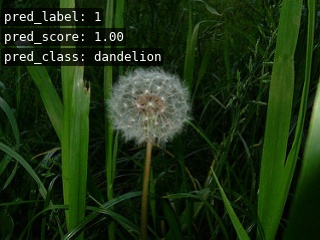
Add new model components
- A complete model consists of
Backbone、Neck、Head、Lossform , In the folderconfigsYou can find - Backbone network : It is usually a feature extraction network , for example ResNet、MobileNet
- neck : Components used to connect the backbone network and the head , for example GlobalAveragePooling
- Head : Components used to perform specific tasks , For example, classification and regression
- Loss : Used to calculate the deviation between the predicted value and the real value
Add a new backbone Backbone
With `ResNet_CIFAR` For example
ResNet_CIFAR in the light of CIFAR 32x32 Image input , take ResNet in kernel_size=7, stride=2 Replace the setting of with kernel_size=3, stride=1, And removed stem After layer MaxPooling, To avoid passing too small feature map to residual block .
It is inherited from ResNet And only modified stem layer .
- Create a new file
configs/backbones/resnet_cifar.py.
import torch.nn as nn
from ..common import BaseModule
from .resnet import ResNet
class ResNet_CIFAR(ResNet):
"""ResNet backbone for CIFAR. ( A brief description of this backbone network ) Args: depth(int): Network depth, from {18, 34, 50, 101, 152}. ... ( Parameter document ) """
def __init__(self, depth, deep_stem=False, **kwargs):
# Call the base class ResNet Initialization function for
super(ResNet_CIFAR, self).__init__(depth, deep_stem=deep_stem **kwargs)
# Other special initialization processes
assert not self.deep_stem, 'ResNet_CIFAR do not support deep_stem'
def _make_stem_layer(self, in_channels, base_channels):
# Overloading the methods of the base class , To realize the modification of the network structure
self.conv1 = build_conv_layer(
self.conv_cfg,
in_channels,
base_channels,
kernel_size=3,
stride=1,
padding=1,
bias=False)
self.norm1_name, norm1 = build_norm_layer(
self.norm_cfg, base_channels, postfix=1)
self.add_module(self.norm1_name, norm1)
self.relu = nn.ReLU(inplace=True)
def forward(self, x): # You need to return a tuple
pass # The forward implementation of the network is omitted here
def init_weights(self, pretrained=None):
pass # If necessary , Overloading base classes ResNet Parameter initialization function of
def train(self, mode=True):
pass # If necessary , Overloading base classes ResNet Training state function
- stay
configs/backbones/__init__.pyImport a new module
...
from .resnet_cifar import ResNet_CIFAR
__all__ = [
..., 'ResNet_CIFAR'
]
- Use the new backbone network in the configuration file
model_cfg = dict(
backbone=dict(
type='ResNet_CIFAR',
depth=18,
other_arg=xxx),
...
Add a new neck Neck
With `GlobalAveragePooling` For example
To add a new neck component , It mainly needs to realize forward function , This function performs Some operations and pass the results to the head .
- Create a new file
configs/necks/gap.py
import torch.nn as nn
class GlobalAveragePooling(nn.Module):
def __init__(self):
self.gap = nn.AdaptiveAvgPool2d((1, 1))
def forward(self, inputs):
# Simplicity , Our default input is a tensor
outs = self.gap(inputs)
outs = outs.view(inputs.size(0), -1)
return outs
stay configs/necks/__init__.pyImport a new module
...
from .gap import GlobalAveragePooling
__all__ = [
..., 'GlobalAveragePooling'
]
- Modify the configuration file to use the new neck assembly
model_cfg = dict(
neck=dict(type='GlobalAveragePooling'),
)
Add a new header Head
With `LinearClsHead` For example
To add a new neck component , It mainly needs to realize forward function , This function performs Some operations and pass the results to the head .
- Create a new file
configs/heads/linear_head.py
from .cls_head import ClsHead
class LinearClsHead(ClsHead):
def __init__(self,
num_classes,
in_channels,
loss=dict(type='CrossEntropyLoss', loss_weight=1.0),
topk=(1, )):
super(LinearClsHead, self).__init__(loss=loss, topk=topk)
self.in_channels = in_channels
self.num_classes = num_classes
if self.num_classes <= 0:
raise ValueError(
f'num_classes={
num_classes} must be a positive integer')
self._init_layers()
def _init_layers(self):
self.fc = nn.Linear(self.in_channels, self.num_classes)
def init_weights(self):
normal_init(self.fc, mean=0, std=0.01, bias=0)
def forward_train(self, x, gt_label):
cls_score = self.fc(x)
losses = self.loss(cls_score, gt_label)
return losses
stay configs/heads/__init__.pyImport a new module
...
from .linear_head import LinearClsHead
__all__ = [
..., 'LinearClsHead'
]
- Modify the configuration file to use the new neck assembly , together with GlobalAveragePooling Neck assembly , The complete model configuration is as follows :
model_cfg = dict(
backbone=dict(
type='ResNet',
depth=50,
num_stages=4,
out_indices=(3, ),
style='pytorch'),
neck=dict(type='GlobalAveragePooling'),
head=dict(
type='LinearClsHead',
num_classes=1000,
in_channels=2048,
loss=dict(type='CrossEntropyLoss', loss_weight=1.0),
topk=(1, 5),
))
Add a new loss function Loss
To add a new loss function , Mainly in the loss function module forward function . in addition , Using decorators weighted_loss It is convenient to realize the weighted average of the loss of each element .
Suppose we want to simulate the probability distribution generated from another classification model , Need to add L1loss To achieve that goal .
- Create a new file
configs/losses/l1_loss.py
import torch
import torch.nn as nn
from .utils import weighted_loss
@weighted_loss
def l1_loss(pred, target):
assert pred.size() == target.size() and target.numel() > 0
loss = torch.abs(pred - target)
return loss
class L1Loss(nn.Module):
def __init__(self, reduction='mean', loss_weight=1.0):
super(L1Loss, self).__init__()
self.reduction = reduction
self.loss_weight = loss_weight
def forward(self,
pred,
target,
weight=None,
avg_factor=None,
reduction_override=None):
assert reduction_override in (None, 'none', 'mean', 'sum')
reduction = (
reduction_override if reduction_override else self.reduction)
loss = self.loss_weight * l1_loss(
pred, target, weight, reduction=reduction, avg_factor=avg_factor)
return loss
stay configs/losses/__init__.pyImport a new module
...
from .l1_loss import L1Loss, l1_loss
__all__ = [
..., 'L1Loss', 'l1_loss'
]
- Modify... In the configuration file
lossField to use the new loss function
loss=dict(type='L1Loss', loss_weight=1.0))
Category activation diagram visualization
- Provide
tools/vis_cam.pyTools to visualize category activation diagrams . Please usepip install grad-camInstallation dependency , edition ≥1.3.6 - stay
Awesome-Backbones/models/Find the corresponding configuration file - modify data_cfg in test Of ckpt route , Change to the weight after training
Currently supported methods are :
| Method | What it does |
|---|---|
| GradCAM | Use the average gradient pair 2D Activate for weighting |
| GradCAM++ | similar GradCAM, But two steps are used |
| XGradCAM | similar GradCAM, But the gradient is weighted by normalized activation |
| EigenCAM | Use 2D The first principal component of activation ( Cannot distinguish between categories , But the effect seems good ) |
| EigenGradCAM | similar EigenCAM, But it supports category differentiation , Activation is used * The first principal component of the gradient , Looks like GradCAM almost , But cleaner |
| LayerCAM | The activation is spatially weighted using a positive gradient , It has better effect for shallow layer |

Command line :
python tools/vis_cam.py \
${IMG} \
${CONFIG_FILE} \
[--target-layers ${TARGET-LAYERS}] \
[--preview-model] \
[--method ${METHOD}] \
[--target-category ${TARGET-CATEGORY}] \
[--save-path ${SAVE_PATH}] \
[--vit-like] \
[--num-extra-tokens ${NUM-EXTRA-TOKENS}]
[--aug_smooth] \
[--eigen_smooth] \
[--device ${DEVICE}] \
Description of all parameters :
img: Target image path .config: Path to the model configuration file . Pay attention to modifying the configuration filedata_cfg->test->ckptWeight path , This weight will be used for prediction--target-layers: Network layer name viewed , You can enter one or more network layers , If not set , The last one will be usedblockMediumnormlayer .--preview-model: Whether to view all network layers of the model .--method: Category activates the method of graph visualization , At present, we supportGradCAM,GradCAM++,XGradCAM,EigenCAM,EigenGradCAM,LayerCAM, Case insensitive . If not set , The default isGradCAM.--target-category: View target categories , If not set , Use the category detected by the model as the target category .--save-path: The path of the saved visual image , The default is not to save .--eigen-smooth: Whether to use principal components to reduce noise , Not on by default .--vit-like: Is itViTAllied Transformer-based The Internet--num-extra-tokens:ViTNetwork like extras tokens The channel number , By default, the backbone network is usednum_extra_tokens.--aug-smooth: Whether to use test time enhancement--device: Computing devices used , If not set , The default is ’cpu’.
In the specified `--target-layers` when , If you don't know which network layers the model has , You can use the command line to add `--preview-model` View all network layer names ;
Example (CNN):
- Visualize using different methods
MobileNetV3, Defaulttarget-categoryFor the results of model testing , Use default derivedtarget-layers.
python tools/vis_cam.py datasets/test/dandelion/14283011_3e7452c5b2_n.jpg models/mobilenet/mobilenet_v3_small.py
- Specify different types of activation effect pictures in the same picture , Given the category index
python tools/vis_cam.py datasets/test/dandelion/14283011_3e7452c5b2_n.jpg models/mobilenet/mobilenet_v3_small.py --target-category 1
- Use
--eigen-smoothas well as--aug-smoothGet better visualization .
python tools/vis_cam.py datasets/test/dandelion/14283011_3e7452c5b2_n.jpg models/mobilenet/mobilenet_v3_small.py --eigen-smooth --aug-smooth
Example (Transformer):
about Transformer-based Network of , such as ViT、T2T-ViT and Swin-Transformer, Features are flattened . To draw CAM chart , You need to specify the --vit-like Options , So that the flattened features can be restored to the square feature map .
In addition to features being flattened , Some classes ViT Your network will also add additional tokens. such as ViT and T2T-ViT Added classification token,DeiT Distillation is also added in token. In these networks , The classification calculation has been completed after the last attention module , The classification score is only related to these extra tokens of , It has nothing to do with the characteristic diagram , in other words , The derivative of the classification score to these characteristic graphs is 0. therefore , We cannot use the output of the last attention module as CAM Painted target layer .
in addition , To get rid of these extra toekns To get the characteristic map , We need to know these extra tokens The number of .MMClassification Almost all of Transformer-based All networks have num_extra_tokens attribute . And if you want to apply this tool to new , Or third-party Networks , And the network is not specified num_extra_tokens attribute , Then you can use --num-extra-tokens Parameter manually specify its quantity .
- Yes
Swin TransformerUse the defaulttarget-layersConduct CAM visualization :
python tools/vis_cam.py datasets/test/dandelion/14283011_3e7452c5b2_n.jpg models/swin_transformer/tiny_224.py --vit-like
- Yes
Vision Transformer(ViT)Conduct CAM visualization ( After testing, it is not added –target-layer Even the default effect is similar ):
python tools/vis_cam.py datasets/test/dandelion/14283011_3e7452c5b2_n.jpg models/vision_transformer/vit_base_p16_224.py --vit-like --target-layers backbone.layers[-1].ln1
- Yes
T2T-ViTConduct CAM visualization :
python tools/vis_cam.py datasets/test/dandelion/14283011_3e7452c5b2_n.jpg models/t2t_vit/t2t_vit_t_14.py --vit-like --target-layers backbone.encoder[-1].ln1
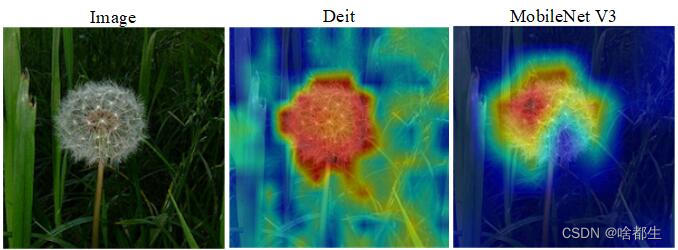
Visualization of learning rate strategies
- Provide
tools/vis_lr.pyTools to visualize learning rates .
Command line :
python tools/vis_lr.py \
${CONFIG_FILE} \
[--dataset-size ${Dataset_Size}] \
[--ngpus ${NUM_GPUs}] \
[--save-path ${SAVE_PATH}] \
[--title ${TITLE}] \
[--style ${STYLE}] \
[--window-size ${WINDOW_SIZE}] \
Description of all parameters :
config: Path to the model configuration file .--dataset-size: The size of the dataset . If specified ,datas/train.txtWill be skipped and used as the dataset size , By defaultdatas/train.txtThe size of the resulting dataset .--ngpus: Use GPU The number of .--save-path: The path of the saved visual image , The default is not to save .--title: The title of the visual image , The default is the configuration file name .--style: Visual image style , The default iswhitegrid.--window-size: Visualization window size , If not specified , The default is12*7. If you need to specify , By format'W*H'.
Some datasets are time-consuming in the parsing and annotation stage , You can directly put `dataset-size` Specify the size of the dataset , To save time .
Example Step:
python tools/vis_lr.py models/mobilenet/mobilenet_v3_small.py
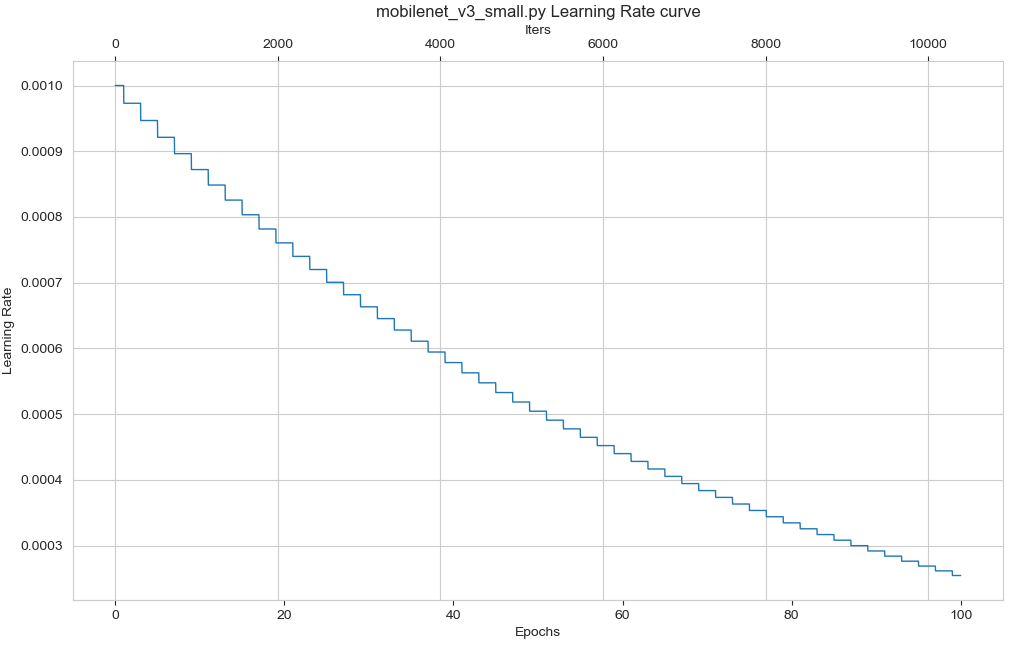
Example Cos:
python tools/vis_lr.py models/swin_transformer/base_224.py
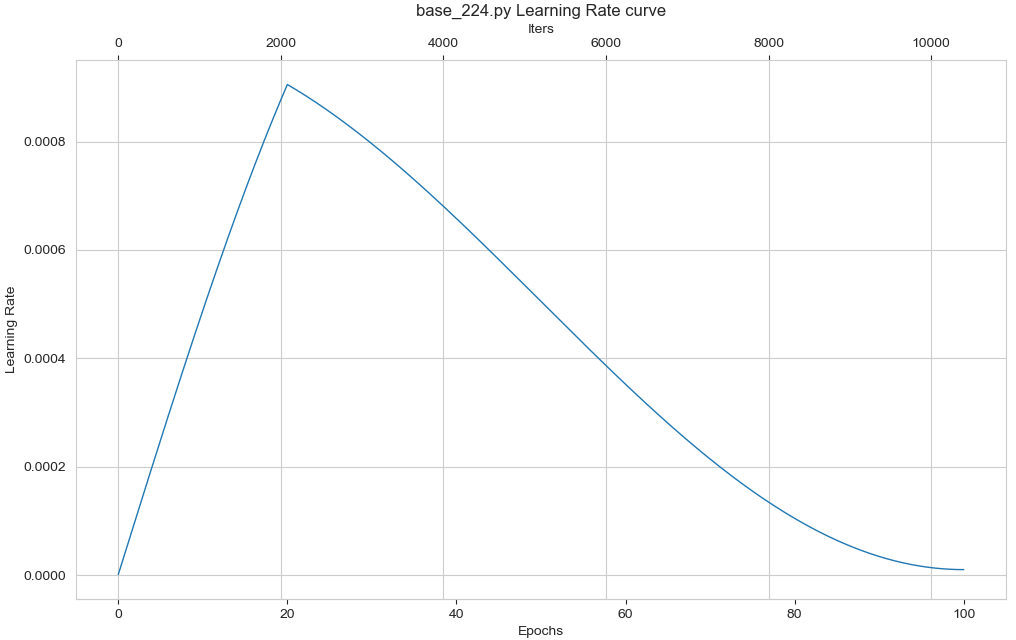
Pre training weights
边栏推荐
- ITK Example
- Sophon CE社区版上线,免费Get轻量易用、高效智能的数据分析工具
- tkinter窗口预加载
- 检查命名空间和类
- Accuracy of BigDecimal Division
- rsync
- Read libco save and restore the on-site assembly code
- EasyCVR接入设备开启音频后,视频无法正常播放是什么原因?
- Mask wearing detection based on yolov3
- Six bad safety habits in the development of enterprise digitalization, each of which is very dangerous!
猜你喜欢
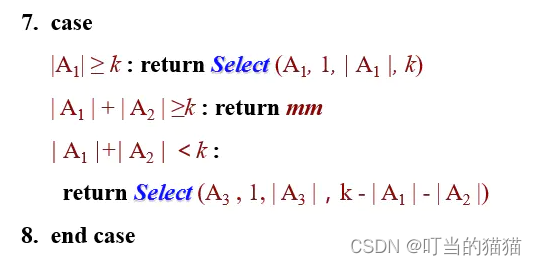
Find the first k small element select_ k

Thesis reading_ Medical NLP model_ EMBERT

Redis Foundation
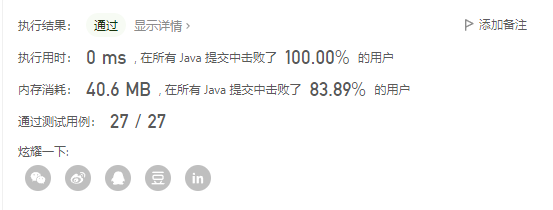
Leetcode exercise - 206 Reverse linked list
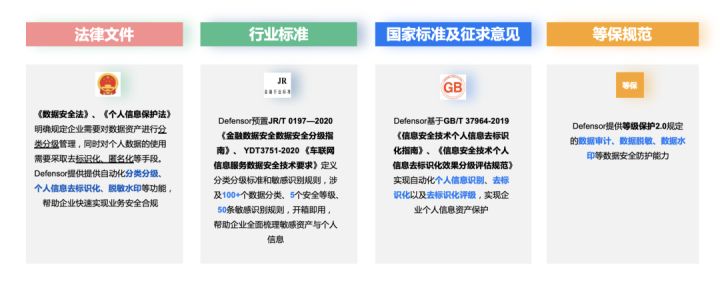
Star ring technology data security management platform defender heavy release

Why is all (()) true and any (()) false?
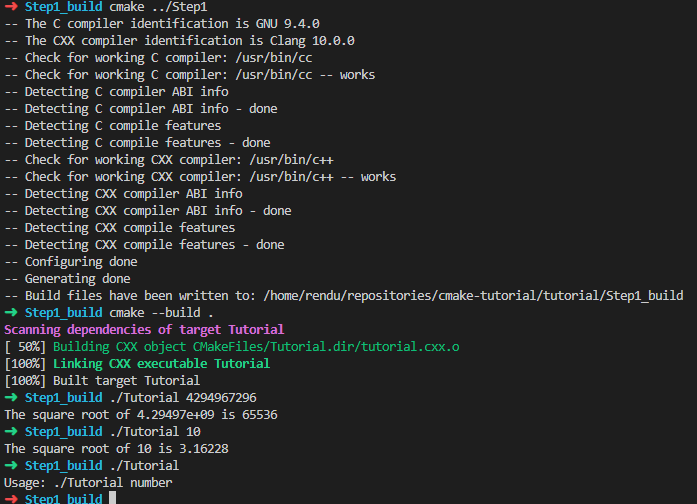
Cmake tutorial step1 (basic starting point)
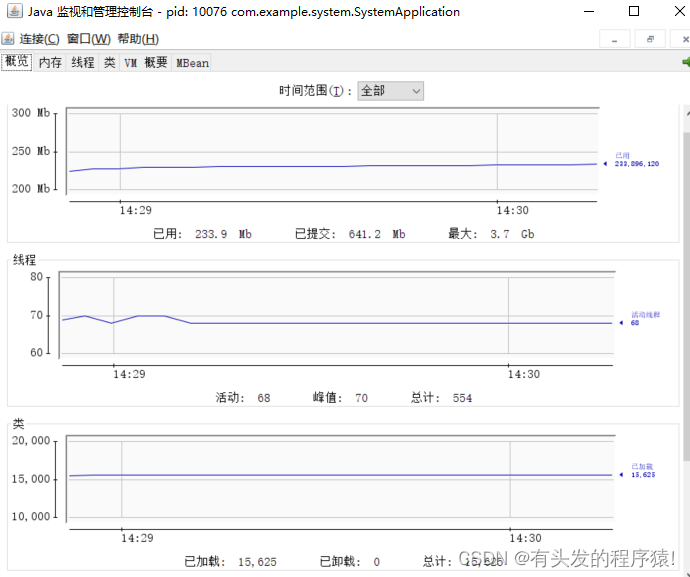
JVM third talk -- JVM performance tuning practice and high-frequency interview question record
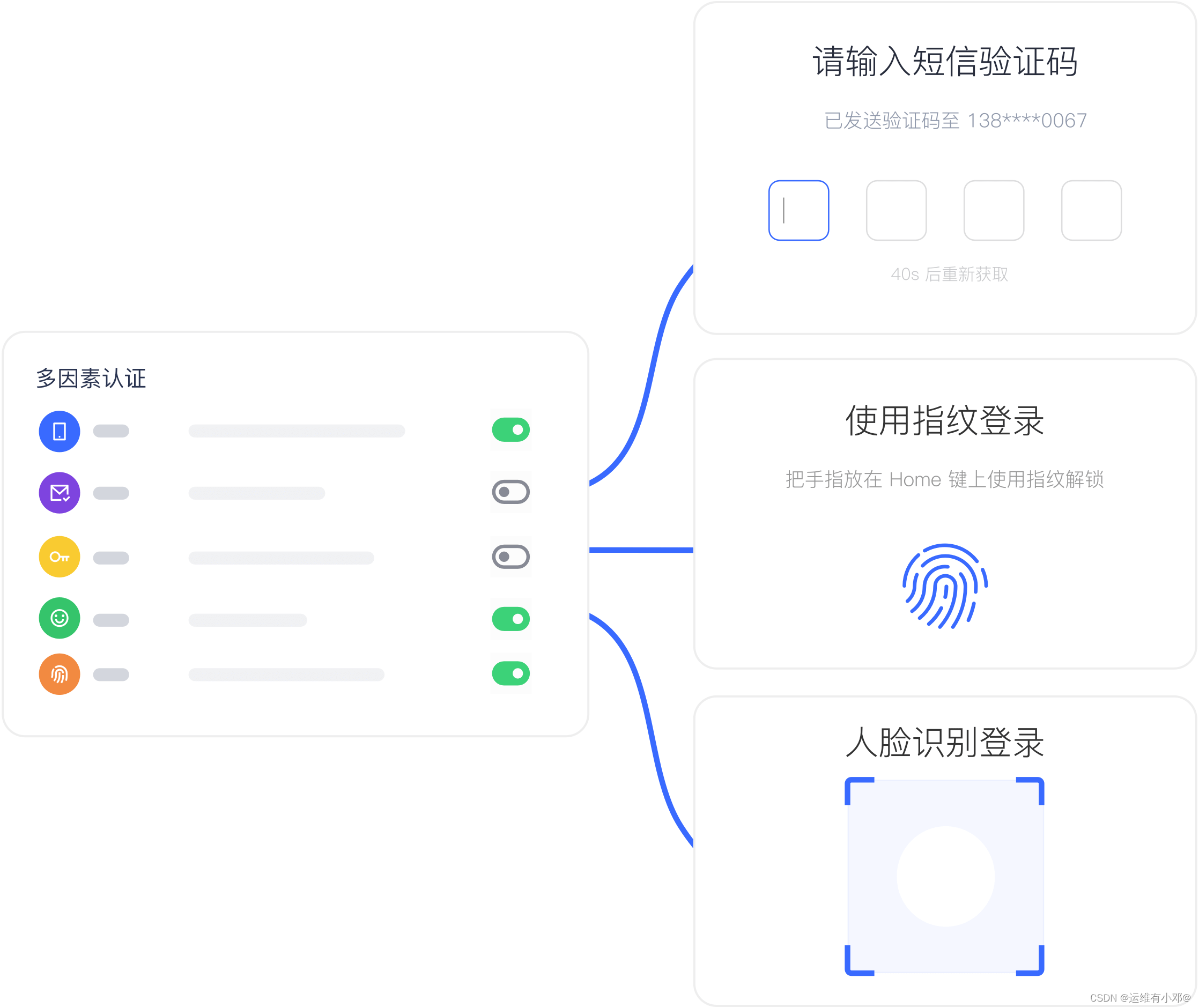
「运维有小邓」用于云应用程序的单点登录解决方案

2022新版PMP考试有哪些变化?
随机推荐
Matlab reference
rsync
破解湖+仓混合架构顽疾,星环科技推出自主可控云原生湖仓一体平台
ITK Example
Leetcode notes: Weekly contest 300
Sentinel flow guard
nacos -分布式事务-Seata** linux安装jdk ,mysql5.7启动nacos配置ideal 调用接口配合 (保姆级细节教程)
吴恩达团队2022机器学习课程,来啦
JVM third talk -- JVM performance tuning practice and high-frequency interview question record
MATLAB查阅
What are the changes in the 2022 PMP Exam?
最大人工岛[如何让一个连通分量的所有节点都记录总节点数?+给连通分量编号]
IDC report: Tencent cloud database ranks top 2 in the relational database market!
Huaxia Fund: sharing of practical achievements of digital transformation in the fund industry
How awesome is the architecture of "12306"?
Six bad safety habits in the development of enterprise digitalization, each of which is very dangerous!
Daily exercise: a series of dates
[TestLink] testlink1.9.18 solutions to common problems
mybash
Compared with the loss of Wenxin, the performance is improved a lot